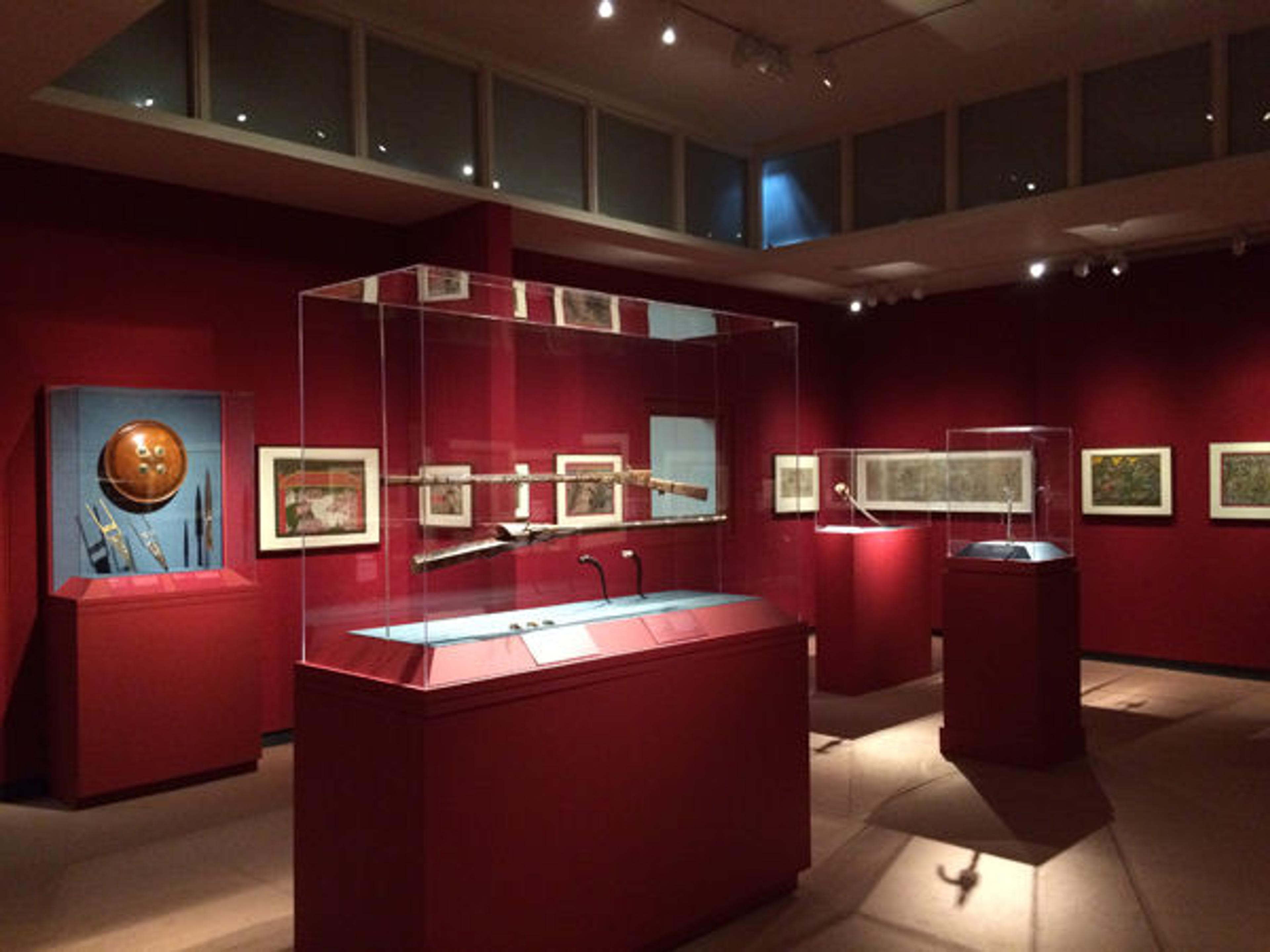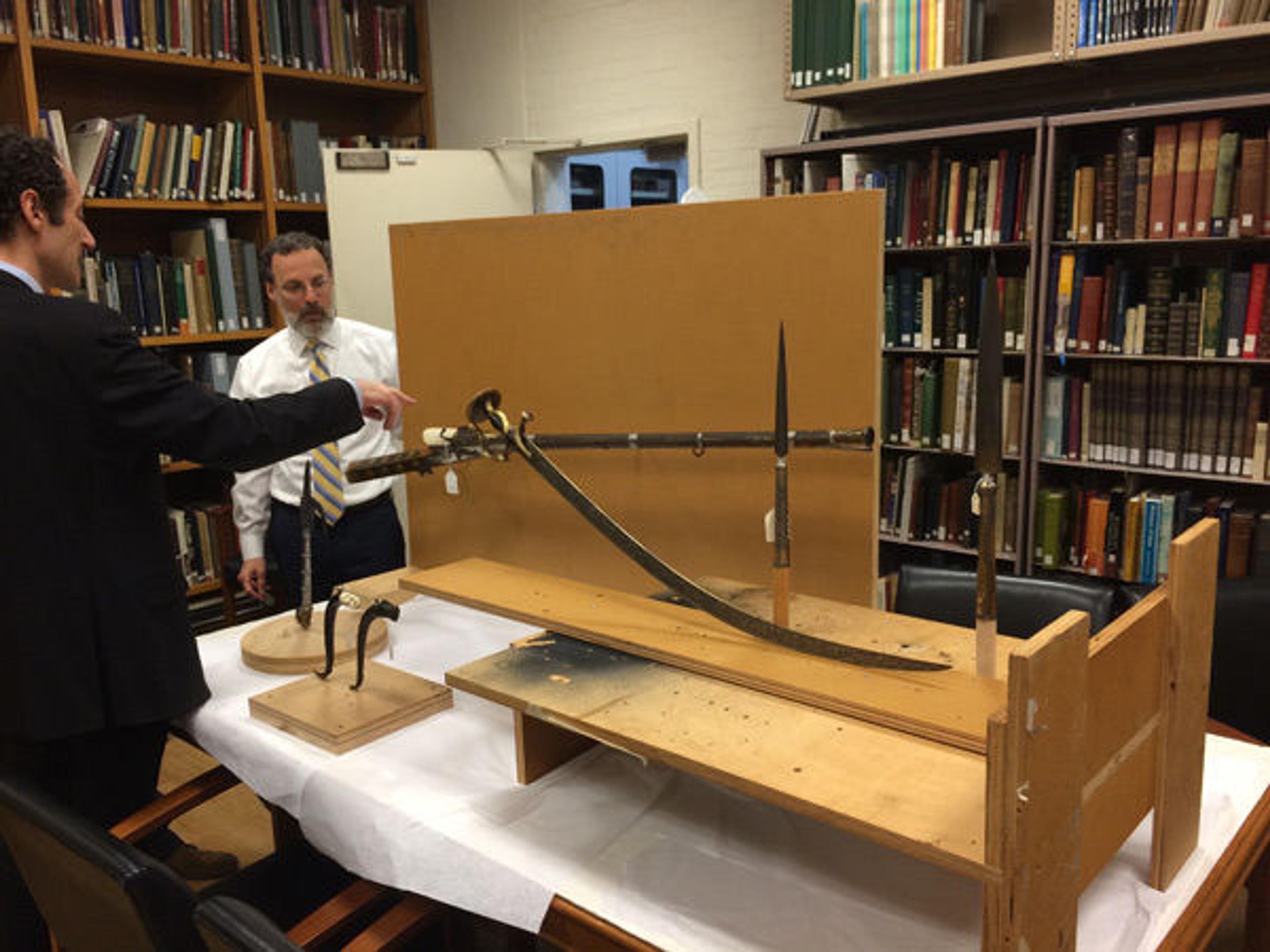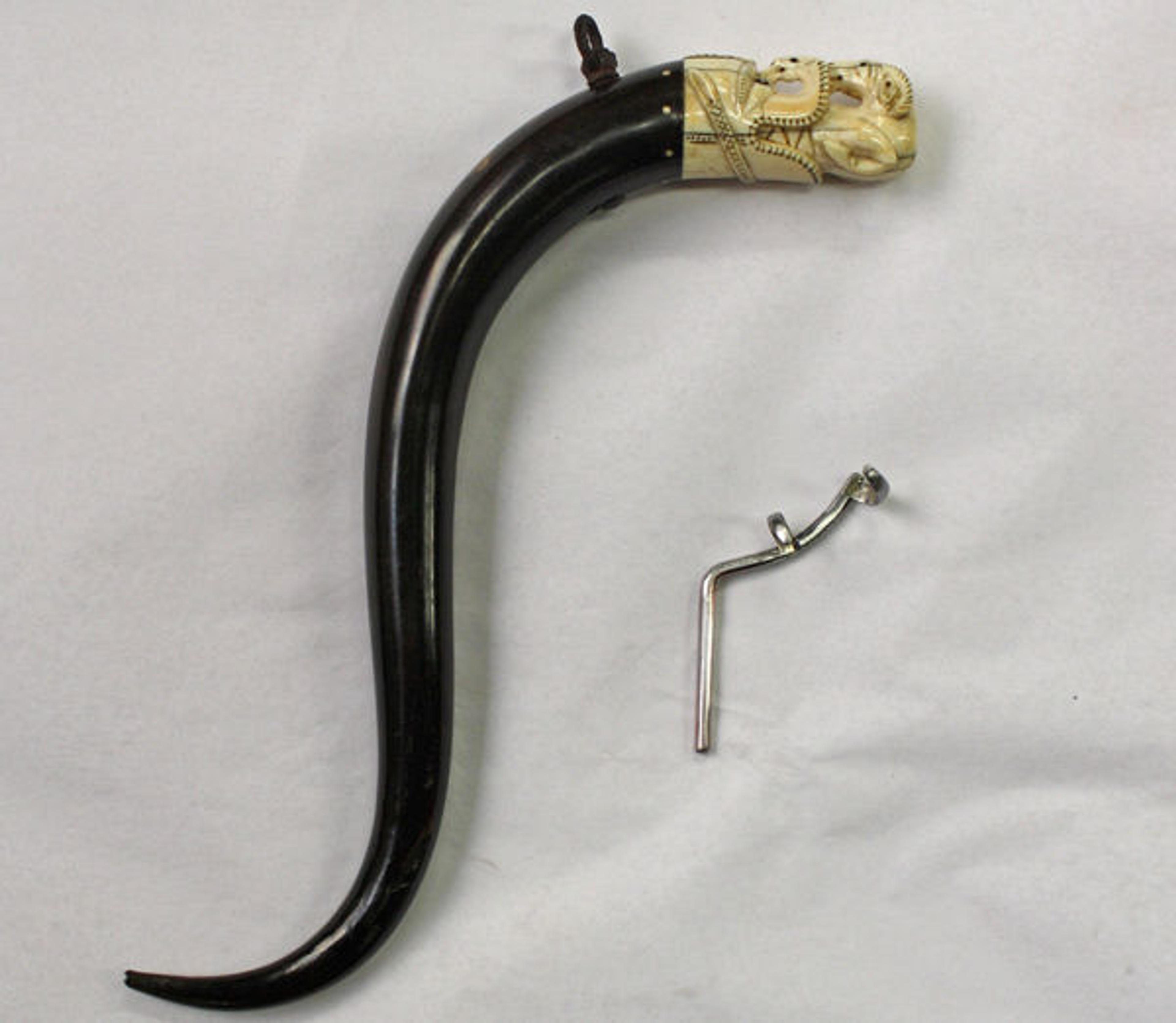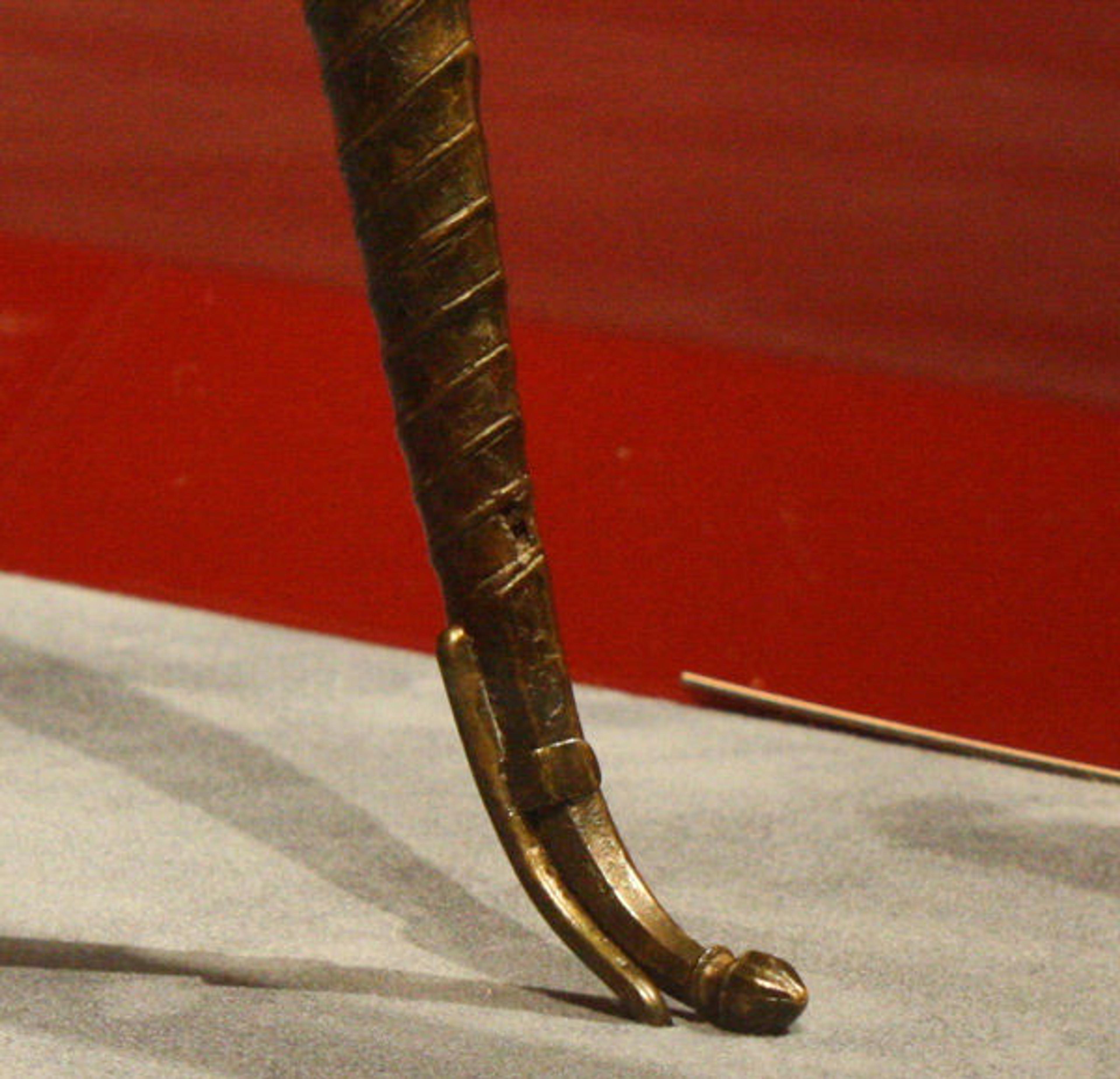The Art of Display: Mounting Arms and Armor in The Royal Hunt

Gallery view of The Royal Hunt: Courtly Pursuits in Indian Art
«The exhibition The Royal Hunt: Courtly Pursuits in Indian Art, on view through December 8, brings together Rajasthani and Mughal paintings from the collections of the Met's Department of Asian Art and Department of Islamic Art, as well as from private collections. These paintings, which depict the extravagance and pageantry of the hunting culture in the royal courts of India, are shown alongside a selection of Indian hunting weapons and accessories from the Department of Arms and Armor. Among the objects are painted matchlocks, an elephant goad, gunpowder flasks carved with fantastical creatures, weapons decorated with elephants and tigers, and other tools of the hunt.»
While the Museum's wonderfully talented conservation preparators are responsible for making most of the display mounts at the Met, the Department of Arms and Armor has conservators within it who, in addition to cleaning and maintaining the collection, have also traditionally constructed the department's display mounts.

The designer and a curator reviewing potential mounts in the Department of Arms and Armor
There are many instances in which the viewer can fully appreciate an artwork, such as a sculpture or vase, without any need for a mount. Many objects, however, cannot be best appreciated while sitting flat. In these instances, the Museum uses display mounts to hang an object on the wall or to float them from a pedestal so the viewer is able to see the most important features of the artwork. As three-dimensional objects meant to be carried or worn, arms and armor often need mounts so the viewer can appreciate them as they were intended to be seen.

The goals of a display mount are simple: to support the object structurally, hold the object at the best viewing angle, and be as close to invisible as possible. The ideal display mount supports the whole object so that none of its weak parts are strained; is secure enough to hold the object in place, even through an earthquake; and is completely invisible to the viewer.
Left: The painted mount for a matchlock gun
The Department of Arms and Armor uses steel for most of its mounts. Arms and armor objects—such as firearms, swords, and breastplates—can be quite large and require very long, cantilevered mounts to hold them in the proper position. Using steel gives us the flexibility to make very dynamic poses for large objects while still keeping the mount itself thin and unobtrusive.
In most cases, some part of the mount will be visible—usually the stem that lifts it off the viewing deck or wall, or the small tabs that reach around the object to hold it in place. In these instances, we color the mount to match the surrounding area; paint the stems to match the color of the case; and, if necessary, paint, polish, or chemically patinate the tabs to blend in with the object.
We need to be careful that the mount itself does not damage the object, either by scratching the object or by being made of material that might chemically react with the art. To protect these objects, we can apply coatings and, often, pad the mounts with a polyester felt or inert polyolefin tubing.

Two primer flasks on display
The mounts we made for the primer flasks on display are a good example of the kind of decisions we make when we design a mount. These flasks would have been hung on the right side of the body, suspended from the metal rings still attached to the top of the objects. If we were to simply lay the flasks on the viewing deck, the viewer would not be able to fully appreciate the objects in the way they were intended to be viewed, so we decided to make mounts that hold the objects upright, with the right side facing the viewer.

A primer and its unpainted mount
To accomplish this, we bent a steel rod to follow the curve of the flask where it would contact the deck. We then hard soldered two tabs onto the rod and bent them to the shape of the flask. We chose to paint the mounts to blend in with the object rather than stand out. Finally, we used thin strips of polyester felt to pad anywhere the mounts touched the object to prevent them from scratching it.

The finished mount for a primer
It is our hope that visitors to The Royal Hunt are able to appreciate these objects not just for their sculptural beauty, but also for their place of honor in the extravagance and excess of courtly life.
Sean Belair
Sean Patrick Belair is an Annette de la Renta fellow in the Department of Arms and Armor.